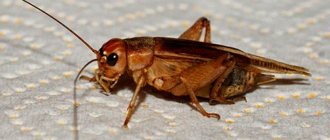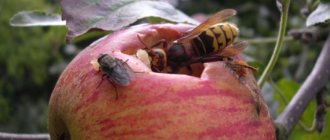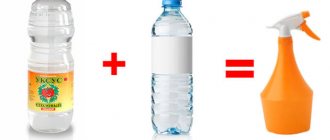What does a centipede look like, does it bite, is it dangerous or not?
Centipede, or flytrap
The centipede actually does not have 40 legs, but only 30. And it is not an insect, as we used to think, but belongs to the genus of arthropods.
The centipede, or another name for the flycatcher, belongs to the family of centipedes, of which there are up to 12 thousand individuals. Let's take a closer look at the flycatcher.
An adult centipede has a jointed body measuring 3-6 cm, covered with chitin, and 15 legs on one and the other side of the body. The small centipede has fewer legs (only 4 pairs). In an adult, they grow back as they grow older. The first pair of legs are shaped like jaws to capture prey. The last pair of legs is longer than the body itself to allow it to run fast. Flycatchers live 3-7 years.
The flycatcher is a predator. She catches and eats:
- Much
- Cockroaches
- Mole
- Moshek
- Spiders
- Larvae
- Chervyakov
- Bloch
- silverfish
The flycatcher is not dangerous to humans . When meeting people, she does not attack, but quickly hides in a gap. She can only bite when she is in danger. Its venom is weak, there may be a slight redness at the bite site.
If you are nevertheless bitten by a flycatcher, you need to:
- Treat the wound with hydrogen peroxide or alcohol infusion.
- For pain, apply a cold compress.
- There are rare cases of centipede allergies, then take antiallergic and painkillers.
Why do centipedes appear in a house or apartment, and what do they eat in the house?
The centipede will settle in a house where it is damp and humid.
Centipedes live in temperate climates. In the natural environment, they look for damp places under stones and plants. To reproduce, the female flycatcher lays fertilized eggs (60-130 pieces) in moist soil.
When cold weather sets in, centipedes find secluded places, hide there and hibernate until spring. Some flycatchers can crawl into a person’s home and live until the weather warms up, and if the centipede finds a lot of food, it will stay longer.
In a house or apartment, centipedes live in damp basements, toilets and bathrooms. They feed on insects and hunt for them, especially at night. The flycatcher senses its prey by smell and vibration when moving, rushes at it with lightning speed, injects poison that paralyzes the victim, and eats it. If you have a lot of “living creatures”, the centipede will eventually cope with it - it has a good appetite.
Flycatchers do not touch food, books, or flowers stored by humans; they do not hunt domestic animals..
Why can't you kill the flycatcher insect?
The first impulse when looking at a house centipede is to swat it and forget about it. However, you should not rush to harm nature without special reasons. A common flycatcher in an apartment is not the worst guest, given the fact that it:
- does not harm humans and domestic animals;
- does not pollute the space with the products of its vital activity;
- destroys cockroaches, moths, spiders and other uninvited guests;
- prevents their occurrence in the future.
Why take a sin on the soul, even such an insignificant one, by killing a peaceful living creature? It is clear that few people can calmly leave the centipede and continue to crawl along their walls. We recommend that you simply take a jar, carefully scoop the insect into it and take it out into the yard. Considering how long the flycatcher insect lives (about 6 years), it will still have many more houses cleared of unwanted cockroach flies.
Centipedes in a private house, apartment, why they should not be killed: folk signs
According to folk superstitions, you cannot kill a centipede; if it bothers you, throw it out into the street.
Folk superstitions arose as a result of observations of various incidents in people’s lives over the centuries.
If you believe the signs:
- The appearance of a centipede in the house foreshadows some news or letter.
- To see a centipede running during the day means heavy rain.
- If there are many centipedes in the house, you cannot kill them, but you need to catch one centipede and throw it outside, the rest will run away on their own.
What causes the flycatcher insect?
Having learned about the centipede's lifestyle, what it eats and what environment it prefers to live in, it is not so difficult to understand why it can appear in a home. At home, the flytrap insect appears only if it discovers that there is something to profit from. A large number of other insects under your roof can also attract a centipede, which will inevitably be tempted by such a hot spot. A basement with high humidity in a private home can also become a source of centipedes, because that’s where they feel most comfortable.
How to poison, remove a centipede from a house or apartment forever: means of control, poison
You cannot poison centipedes; throw them into wet leaves outside the window.
You cannot kill or poison centipedes with various means because of their small number on our Earth . Usually one or several centipedes can wander into a home, and their reproduction occurs in nature.
If you are uncomfortable with a flycatcher, you can catch it in a jar and release it outside in the spring or summer.
Mechanical means of combating centipedes
Mechanical impact bears fruit, as confirmed by research by scientists from Nebraska (USA). At night, experienced housewives arm themselves with fly swatters and manually destroy pests that have left their shelters. You need to practice here - you are dealing with nimble creatures. The second option is a vacuum cleaner.
If you have any questions, please let us know Ask a Question
Have you thought about how to remove centipedes from your home forever? Here we cannot do without powerful chemistry, which we will now review. Go:
- Medilis-Ziper. You will need gloves, a protective mask and a spray bottle. The product is toxic, so be careful.
- Global Original. The substance is toxic and has an unpleasant odor. This is a paste that is applied in a thin layer around the perimeter of the room (along the baseboards).
- Raid. A proven product that is sprayed into the air and smells of lavender. After use, rooms should be ventilated.
- Clean house. The aerosol does an excellent job of removing centipede nests. For an apartment of 80 square meters, one bottle is enough, taking into account a couple of treatments.
- Dichlorvos Neo. A harsh aerosol substance that works for two weeks. It is better to use it with a respirator and remove children from the house.
There are universal folk methods of dealing with unpleasant neighborhoods. The most popular is boric acid, a bulk nerve agent sold in regular pharmacies. The powder crumbles in areas where insects live, but there is also an option with a solution applied to the walls of the home. The substance is not dangerous for people and pets.
But cayenne pepper does not kill insects, but it repels them from your home. The main thing is that children or cats do not get to the treated areas. Pyrethrum, created on the basis of chamomile inflorescences, has a good effect. Now you know how to get rid of house centipedes without resorting to aggressive chemicals.
According to popular belief, you cannot kill a centipede; if it bothers you, throw it outside
Folk signs arose as a result of observations of various incidents in people’s lives over the centuries.
If you believe the signs:
- The appearance of a centipede in the house foreshadows some news or letter.
- To see a centipede running during the day means heavy rain.
- If there are many centipedes in the house, you cannot kill them, but you need to catch one centipede and throw it outside, the rest will run away on their own.
You can’t poison centipedes; throw them in wet leaves outside the window
It is impossible to kill or poison centipedes by various means due to their small number on our Earth. Usually one or several centipedes can wander into a home, and their reproduction occurs in nature.
If you are uncomfortable with a flycatcher, you can catch it in a jar and release it outside in the spring or summer.
We suggest you read: How to get rid of rats in a private house, chicken coop, apartment and other premises
Preventing the appearance of centipedes in a house or apartment: tips
If you keep your house clean, ventilate, and prevent dampness in the bathroom and toilet, centipedes will not get in.
Despite the unpleasant appearance of the centipede, it only brings benefits to people . And if you don’t want to meet her in a house or garden, then you need to clean up the area and prevent humidity in the premises.
To prevent centipedes from starting in your house or apartment, you need to:
- Repair leaking sewer and water pipes.
- Remove everything unnecessary under the bathtub and in the toilet.
- Avoid leaving puddles or wet rags on the bathroom floor.
- Wash off the mold, establish ventilation and ventilate rooms with high humidity.
- Make sure that the kitchen, bathroom and toilet are free of flies, cockroaches, moths, fleas, and silverfish.
- Seal all the cracks in the apartment or house with cement mortar, close the cracks in the wooden floor, and put a mosquito net on the windows.
- Remove rotten boards, old paper and any debris from the basement.
- In the spring, remove last year's leaves from your garden plot in time.
So, if you remove potential food for the flytrap, put things in order in your house, or make living conditions for the centipede not entirely comfortable, it will leave your house or apartment on its own.
How to get rid of centipedes using traditional methods
Folk remedies will help get rid of several individuals in the apartment. Despite the simplicity and availability of available methods, when using them, exercise caution and safety measures. Improper behavior with household poisonous compounds can lead to intoxication.
Cayenne pepper will help remove flycatchers, the aroma of which is not tolerated by pests. Sprinkle the powdered product where insects appear and they will soon leave the house
Boric acid is used to control pests. Sprinkle it under baseboards, in bathrooms behind pipes, and in other centipede habitats. The product is effective in combating many insects, while being safe for people and animals.
Diatomaceous earth powder will help remove pests. This is a safe, non-toxic product with no pungent odor. To kill pests, simply sprinkle the powder in their habitats and they will soon leave your home.










